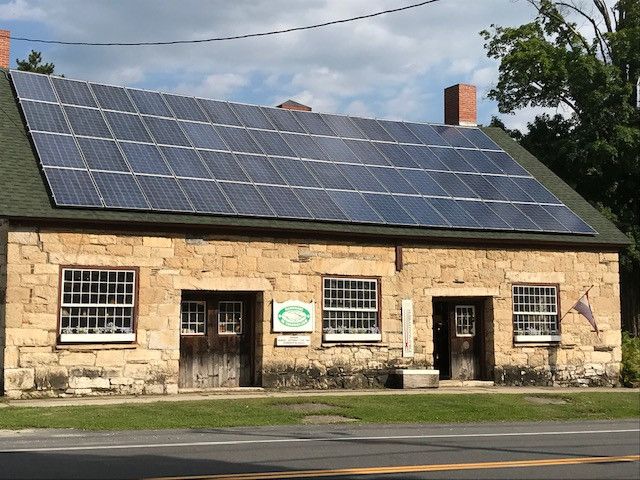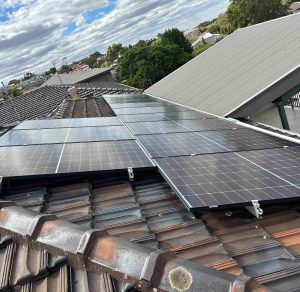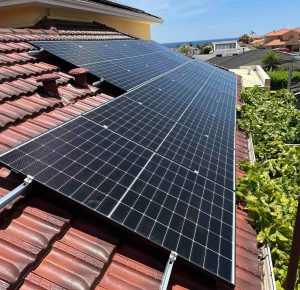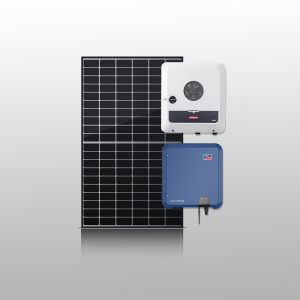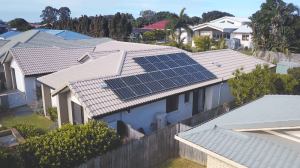Efforts are being taken by individuals, businesses, organizations, and governments all over the world to minimize their impact on the environment. This can be achieved by reducing their dependence on non-renewable energy sources. Currently, sustainability issues and climate change issues dominate the world. There is a constant push for the adoption of renewable energies.
Among renewable energy sources, solar energy is in vogue now. This trend is likely to accelerate at an alarming rate as the solar technology has improved and solar panels have become more affordable.
Historic buildings, sites and resources are an integral part of any community. It is a reflection of our history. It helps us understand and respect people who lived in different eras with different habits and traditions.
Historical buildings do not have the latest technologies. They often leave a larger carbon footprint. Updating it with solar panels would be the best way to come in line with green initiatives.
Preserving and restoring it is the responsibility of the government. Whether historic buildings can be solar powered is a matter of great concern.
Solar power on historic buildings
There is nothing that says solar powering a historic building cannot be done. We can install solar panels in a historic building, but it should be after a careful review and planning. Solar installation has to be done without causing any direct or irreversible impact on the character‐defining feature of a historic building. Solar powering a historic building is acceptable as long as the panels can be placed discreetly out of view and the building structure does not need modification.
One has to be very cautious while doing so because even a minor thing like few holes in an ancient wooden beam or a block of stone might affect the older generation. Not every alteration can be detrimental to those values, many installations has already been done without compromising the integrity of historic resources.
Schools and other institutions are running in many of these historic resources. They can make huge savings on their electricity bills with solar installation. It can produce onsite energy to meet the electric needs of these buildings.
Advantages of installing solar panels on a historic building
Solar panels are a source of financial resource too. The amount can be used for the preservation of the structure.
Many are concerned about the rooftop solar panels affecting the aesthetic appeal of historic buildings. Solar powering the roof doesn’t always alter the historic preservation of the building.
As long as the roof is not visible from the outside it doesn’t matter even if it is powered by rooftop solar panels. At times the old, decrepit slated roof looks better when replaced with solar slates that look much the same.
Under the National Historic Preservation Act (NHPA), the Secretary of the Interior is responsible for establishing professional standards and for providing guidance on the preservation of the nation’s historic properties.
If solar panels are installed on a historic property in such a way that it cannot be seen from the ground or it is hidden behind a low parapet of a historic industrial building, it meets the Secretary of the Interior’s Standards for Rehabilitation.
Caution before installing panels
An installation that negatively impacts the historic character of a property will not meet the Standards.
Solar panels installed on a new addition as part of the rehabilitation of the historic Gund Brewery, Wisconsin is an example that meets the Standards.
The panels are placed on top of a compatible new addition at the back of the historic property. Though it is visible from the parking area, installation is consistent with the historic industrial character of the site. It meets the Standards.
Old Hilton Hotel in New Mexico is a historic hotel building that is a large and prominent landmark in the community. Initially, when solar panels were installed, it was set at an angle that created a new sawtooth feature that detracted from the roofline and distinctive cornice detail.
It didn’t meet the standards. The angle of panels had to be changed to reduce its prominence on the building. The saw tooth effect had to be eliminated to make the earlier decorative cornice remain as the dominant feature of the roofline. With the changes, it met the standards.
Follow the policies and regulations
In many places, regulatory limitations and strict interpretations prevent the adoption of solar technology. Careful articulation of policies guiding the use of solar panels in communities can be of help. It helps to promote the adoption of renewable energy systems and support the protection of historic resources.
Ground-mounted solar panels are a better option while installing solar panels on the site of the historic resources. It is better to get the panels installed in such a position that reduces their visibility like the rear or side yard.
Historic landscapes, their natural design and features, and materials have to be given due respect. The installation shouldn’t hamper it by any means. If there are new buildings or additions to the historic building it is better to locate solar panels in the less visible areas of the new additions. It helps to retain the compatibility of historic buildings and their settings.
If the project doesn’t have new additions, panels have to be placed on an existing non-historic addition or accessory structure. It minimises the impact of installation on historic resources by protecting the historic fabric against alteration. Better to avoid placing the panels on street-facing roofs or walls. It helps to minimise the visibility of panels from a public place. Installation behind parapet walls, dormers, rear-facing roofs is all good choices.
Well planning before installation
Character-defining features of historic resources have to be retained. Installations that result in the permanent loss of such features have to be avoided.
Most importantly, avoid two things while installing solar panels in historic building. Firstly, installations that alter existing roof lines or dormers. Secondly, the ones which obstruct views of architectural features like overlaying windows or decorative detailing.
Solar panel installation has to be reversible. Anything that causes damage to historic fabric has to be avoided. Solar roof tiles, laminates, and glazing have to be used in a way that doesn’t destroy the historic fabric.
The usage of brackets and the number of points of attachment has to be minimalised to avoid the damages caused to the fabric.
Take care of the roof
While installing solar panels one has to ensure that the panels won’t be visible above the existing roof structure of the historic building. The panels have to be placed a few inches below the roofline.
To avoid the visibility of solar panels on flat roofs, it is better to set the panels back from the roof’s edge and adjust the angle and height of the panels accordingly. It is better to locate all the panels on a single roof rather than scattering them on several roofs.
It is better to use solar panels, support structures, and conduits that blend into the surroundings. If all the elements of solar installation match the surrounding building fabric in colour the overall visibility and reflectivity of solar panels can be substantially reduced.
Most people these days are in support of renewable energy and the preservation of historic values. The right design, as well as a workable solution, will stop ruining the historic building while installation. Above all, design and planning will help the historic buildings to meet sustainable energy goals without compromising their historic significance and integrity.

